Lesotho and beyond
Lesotho is unique and special in many ways. Virtually unknown to the rest of the world, it is perhaps the only country in the world completely surrounded by another and it has the highest low point of any country in the world. Despite being an island in the sea of South Africa it never suffered from Apartheid, it’s high mountains, remote villages and terrible roads are legendary and it gets very few visitors. In other words, we had to check it out.
We entered the country via the challenging Sani Pass, that another story in itself, and passed through high treeless mountains past humble villages, the local shepherds wearing traditional heavy blankets, herding goats and using donkeys for transport. This was living at the most basic level in an incredibly remote and desolate place and we realised our Lesotho experience would be completely different to that of South Africa.
We camped that night in the grounds of the Molumong Lodge in the little village of Molumong clinging to the hillside at about 2,500 metres (about 7,750 feet). The word ‘lodge’ dramatically overstates the old building but the caretaker was happy to open it up so we could use the toilet. Originally built by Scottish missionaries 100 years ago, the building had character and charm but seemed lonely and forgotten in such a remote location. Our panoramic views from the back lawn included boy shepherds moving their flock of sheep past us, children playing below, stone houses dotting the hillside, a step back in time, the scene was almost biblical.
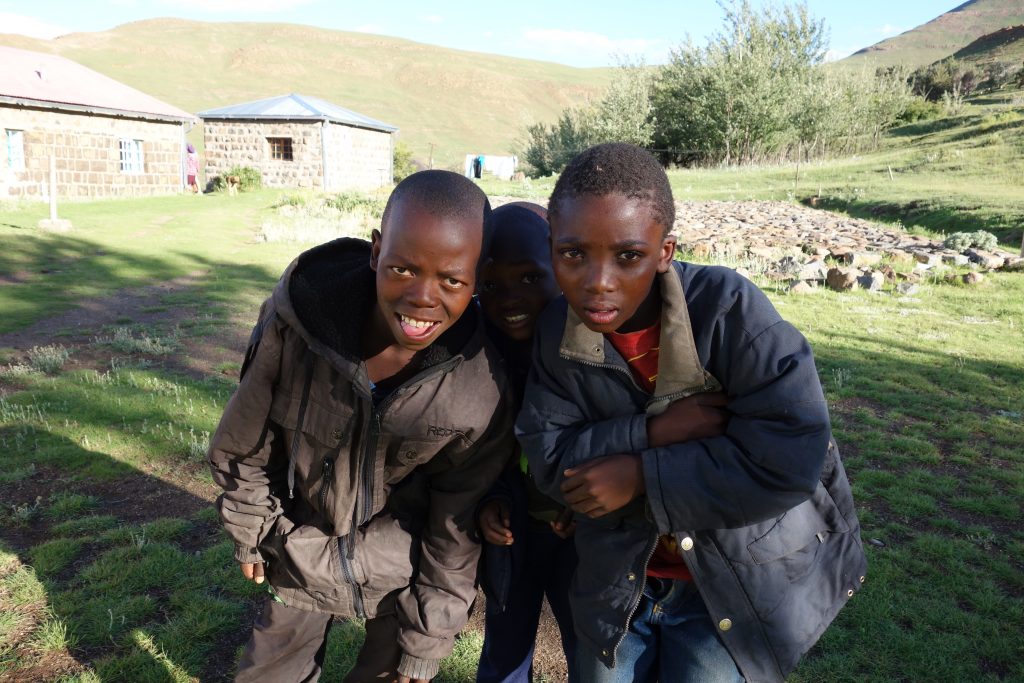
These three boys showed us where our hidden-in-plain-site ‘lodge’ was and were happy to ham it up for the camera
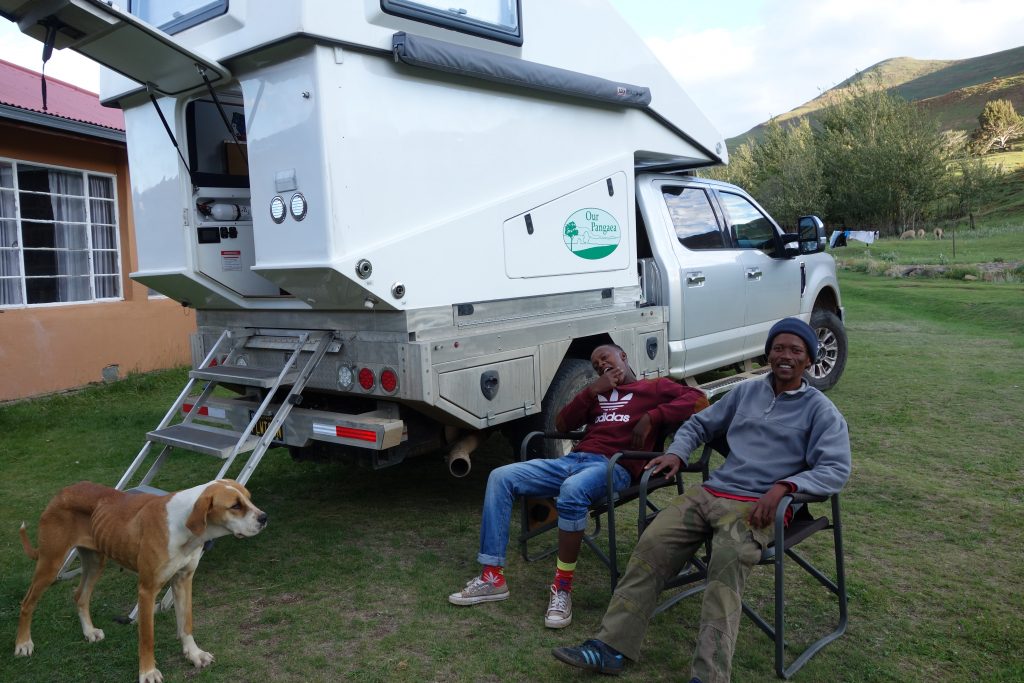
These two guys were fascinated by our fold-out chairs and had to try them out for themselves. The guy on the right is the caretaker of the closed lodge but was happy to open it up for us to use the toilets.
The next day we drove back to the paved road and followed it northwest across the northern stretches of this small country. The road weaved its way upward and around the high treeless mountains, each turn providing sweeping views of this forgotten landscape. We crossed the Tlaeng Pass at an amazing 3,225 metres (about 10,000 feet), then dropped down to cross a river and back up over Mahlasela Pass at an amazing 3,222 metres. Enroute we passed Afriski Mountain Resort with its one chairlift and modest skiing infrastructure. Where the skiers come from and stay to ski in northern Lesotho is completely beyond us.
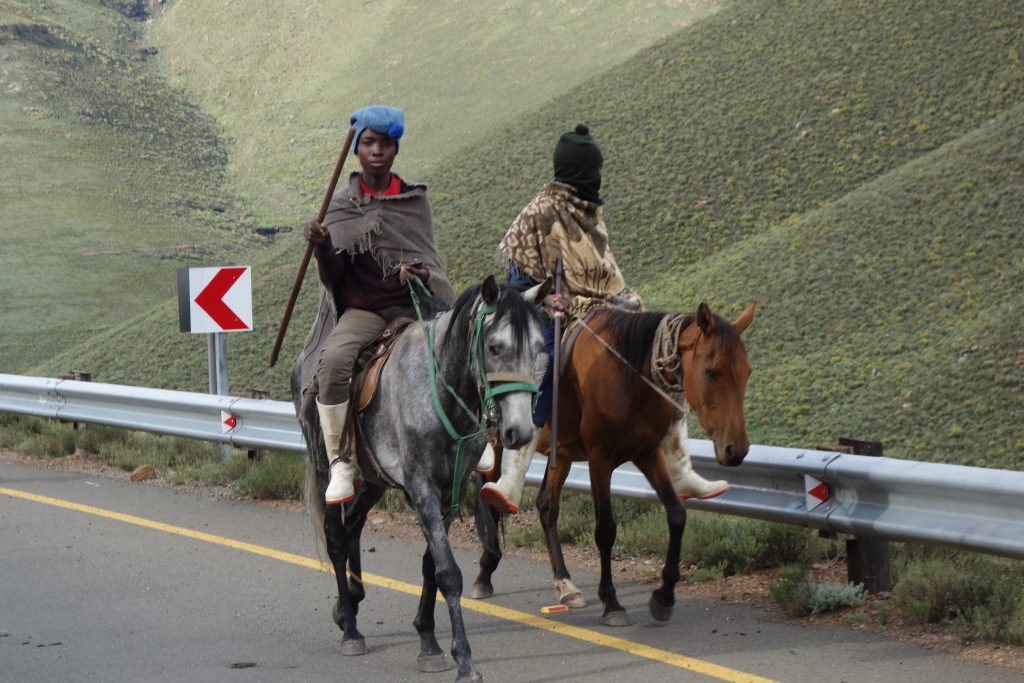
Our paved road across northern Lesotho was used by all the locals – including these young guys on their horses
We dropped off the high mountains and took a fascinating private tour of the Liphofung cave art site featuring art drawn by the original San bushmen over 5,000 years ago. Mixing Eland blood and fat the shamans of the tribe would drop into a trance and paint scenes of hunting, war and daily life on the walls of these cool overhanging caves. Good stuff.
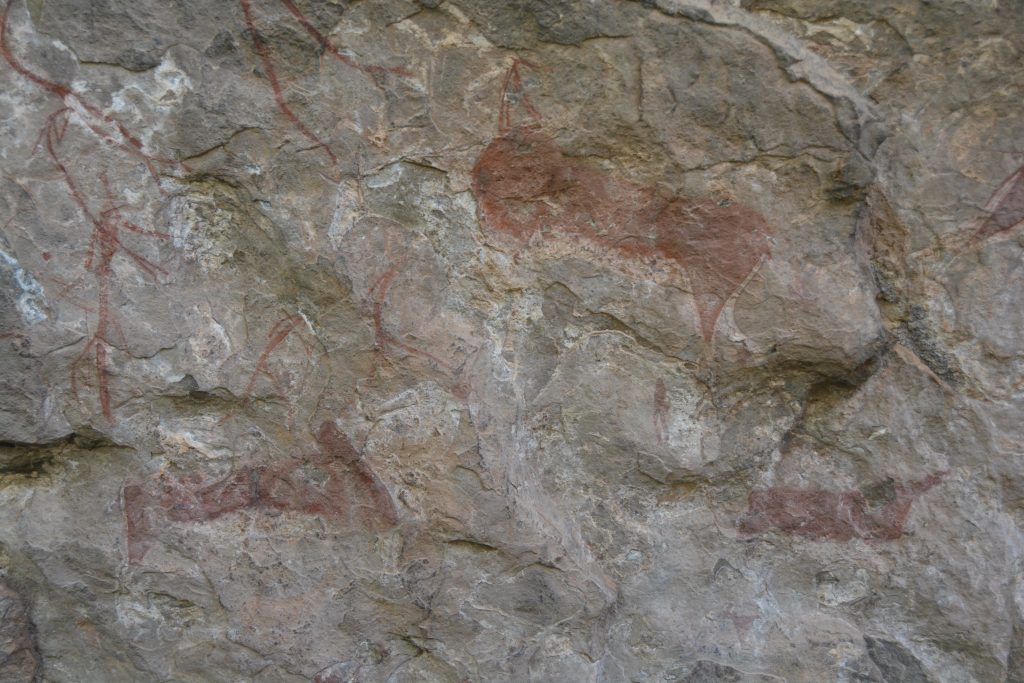
Julie and I have always loved the rock art of Australia so it was great to see some of the local stuff as well.
We reluctantly passed out of Lesotho and back into South Africa, enjoying our brief but fascinating visit to this amazing country, and made our way to Golden Gate Highlands National Park. Bordering Lesotho, this land features high sandstone sculptured cliffs and dramatic escarpments, glowing in the late afternoon light as we passed through. We camped that night at Sterkfontein Dam Nature Reserve right on the banks of the lake, a warm fire to entertain us as we shared drinks with Mike and Heidi, experienced African travellers from Homer Alaska.
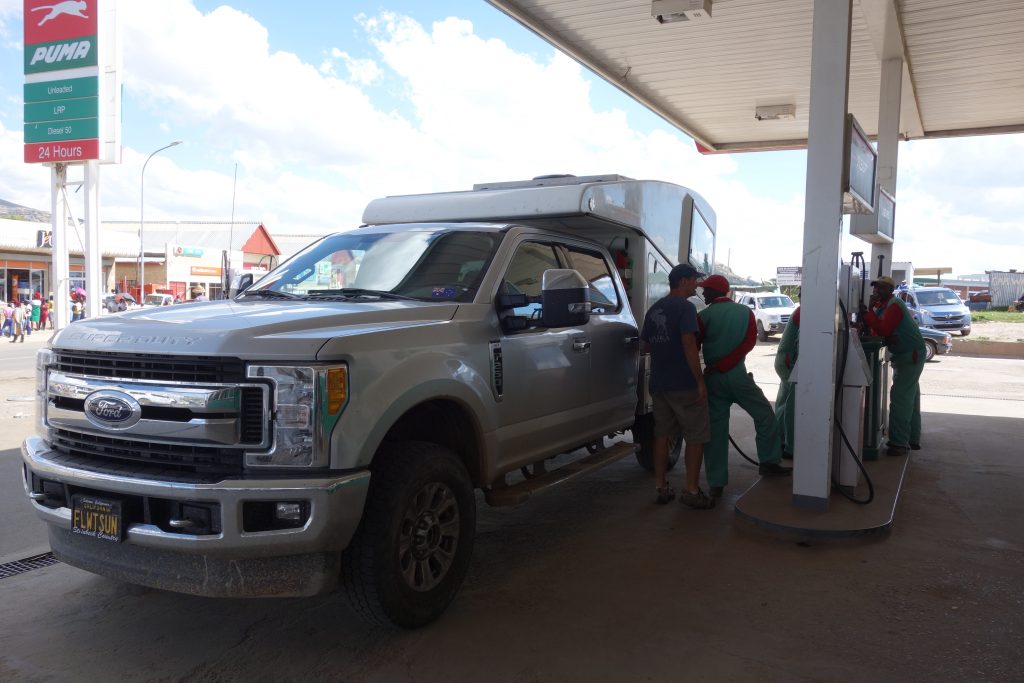
So this is where they’re hiding the petrol stations! Fuel in Lesotho was the third cheapest of our entire trip after Russia and a couple of states in the US

Golden Gate Highlands National Park looked like it had a lot to offer but we had to (slowly) drive through
As we passed the evening by the fire a herd of zebras came into camp and grazed on the grass around us. Not 20 feet from Tramp, these beautiful animals took no notice of our noise, lights or cameras as we marvelled at the special moment. We love Africa.
Our hunt for African wild game continued and the next morning we saw black wildebeest (which have a very limited range in South Africa), springboks and blesboks as we drove across northern Kwa-Zulu Natal, passing through rich farmland and green rolling hills along the way. It’s a little strange to see a herd of impalas in a green paddock between fields of healthy corn but that’s South Africa.
We made our way to an unheralded game reserve with the easy to pronounce name of Hluhluwe-iMfolozi Park and began the drive through the park to our chalet accommodation. This section of the park was covered with thick thorn bushes and trees, not immediately conducive to spotting wild animals. But as we slowly drove the narrow dirt track the animals began to show themselves. First small herds of impalas, then seven giraffes on the road, zebras here and there, a buffalo, two magnificent rhinos, a pair of wild African dogs, more ungainly giraffes and always, impalas everywhere. This was fabulous stuff, what we came for, what we couldn’t get enough of.
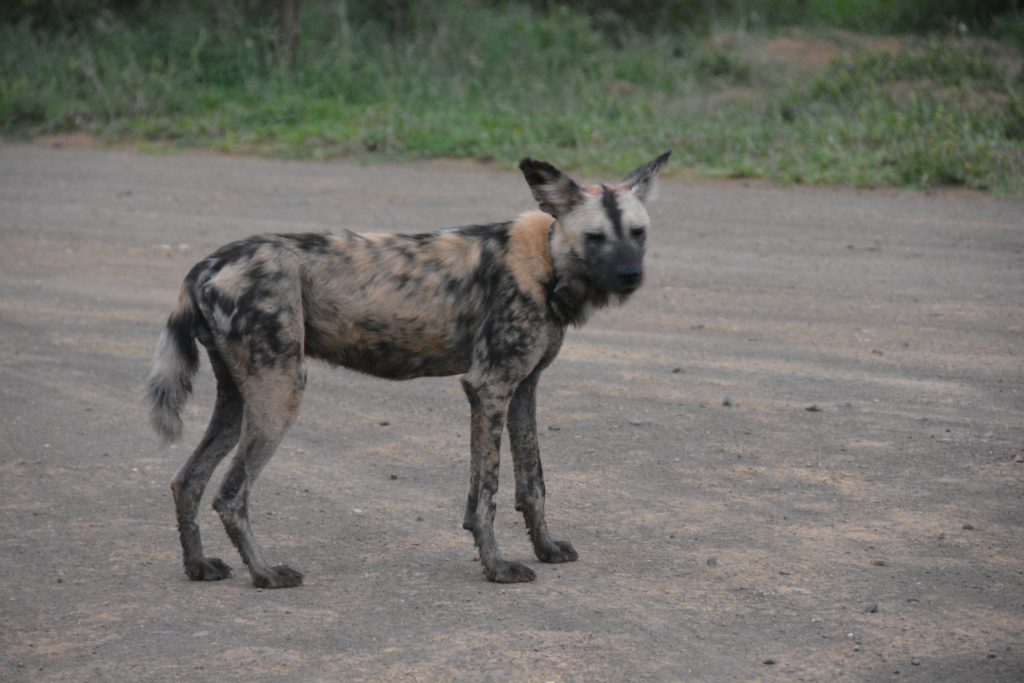
We saw two African wild dogs, this one with a tracking colour on it, and learned later they are extremely rare. We met a German guy who stayed 40 days in a game reserve in order to see the wild dog and we saw it in the first hour!

A face not even a mother would love – the African buffalo staring down Tramp to defend his precious waterhole
After a cosy night in our chalet (no camping allowed in the park and in any case the guy at Check-in said “the lions have been bothering us today”) we headed out for a day of hunting with our Nikon, Sony and Samsung.
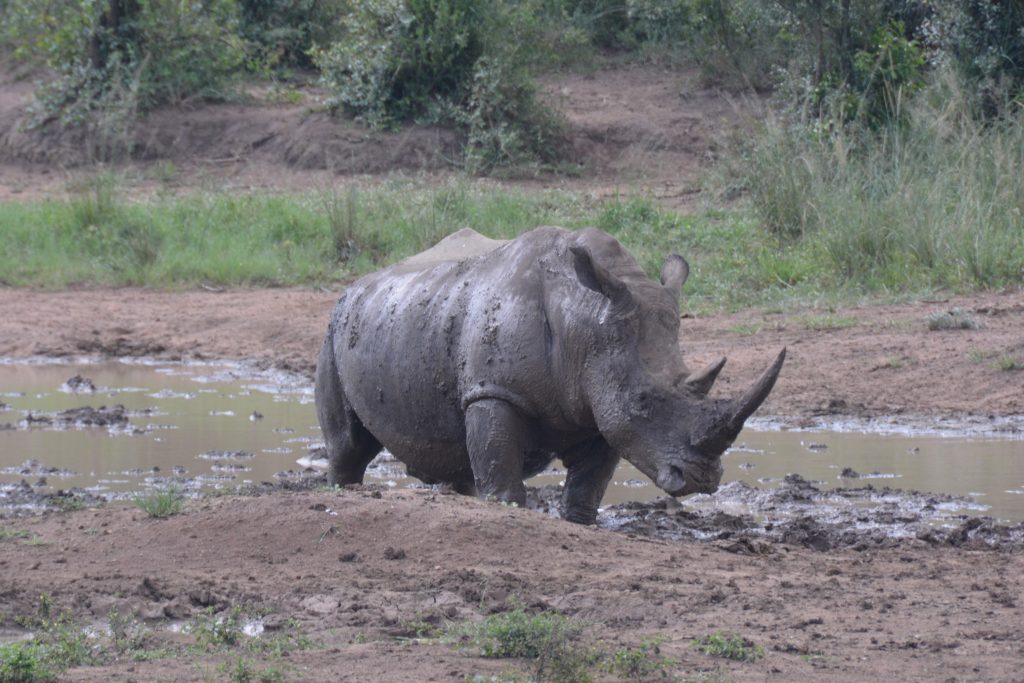
The rhino is a dangerous and formidable creature – his size is deceptive from a distance and scary from up close
There is something magical about seeing wild African animals in their natural habitat going about their daily business. It is the quintessential African activity and provides an experience that can’t be duplicated anywhere else in the world and memories that last a lifetime. Our day in Hluhluwe-iMfolozi National Park, even if we never learned to pronounce it, delivered on all fronts.
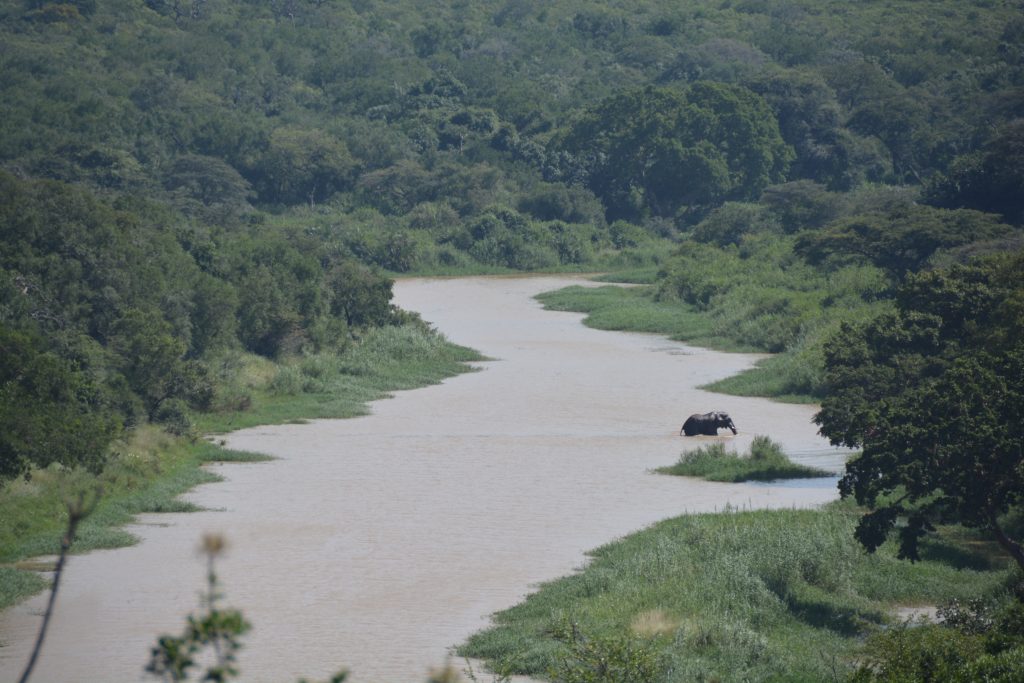
We came around a corner and were lucky enough to watch this elephant cross the river – including swimming underwater briefly while holding his trunk above the water to breath
Besides driving through gorgeous country on single lane dirt tracks with almost no other vehicles we also saw a wide range of animals in amazing settings. We saw warthogs and nyalas, a handsome large antelope we had never seen or heard of before, grazing around our chalet during breakfast. Zebras, the optical illusion animal designed by children, and cute little impalas were the most common, the huge buffalo wallowing in mud the ugliest, the massive white rhino (not white at all) the most special because this park was founded on preserving both the white and black rhino and many other amazing creatures.
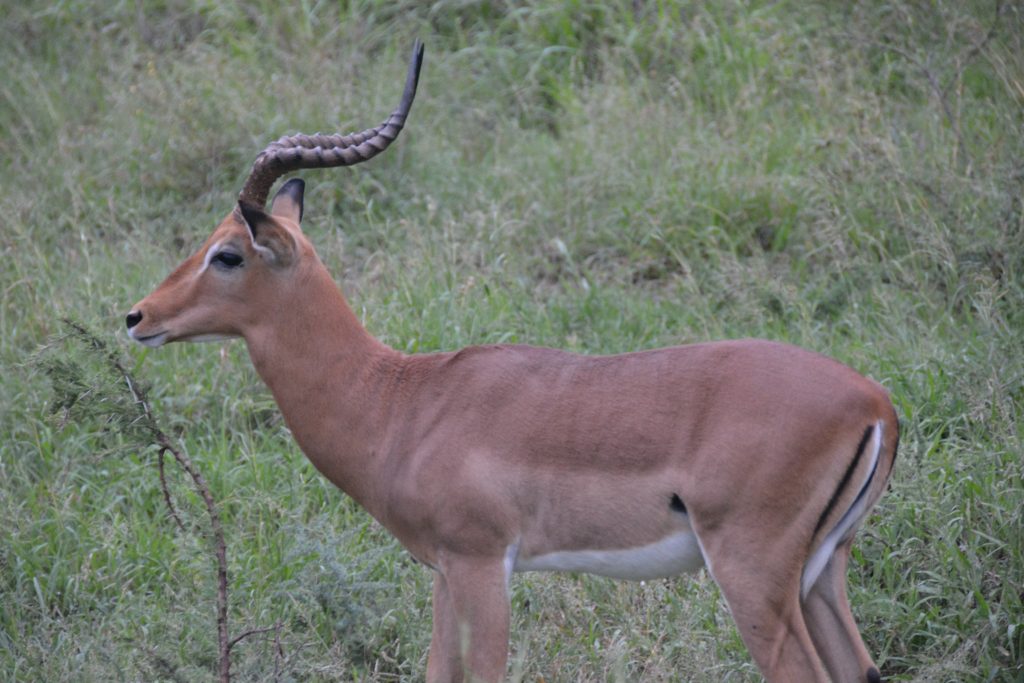
The beautiful impala are the most common animal in the parks and are referred to as the McDonalds of Africa because everyone eats them
One interesting moment of the day was when we pulled into a picnic area and I went into the men’s urinal where I was stung by nasty wasp. The pain was intense, a little scary, there was immediate swelling and the discomfort lasted for many days. And thanks for asking, but no, I was actually bitten on the leg.
But the day was stolen by elephants and we had two memorable encounters. We came around a corner to find a family of four elephants at a mud hole right next to the road spraying themselves with mud to help keep cool and fight off the insects. To see them spraying mud everywhere, so close we thought some mud would splatter on Tramp, was quite a spectacle. And the little baby trying to imitate her parents while trying to avoid being stepped on was quite something.
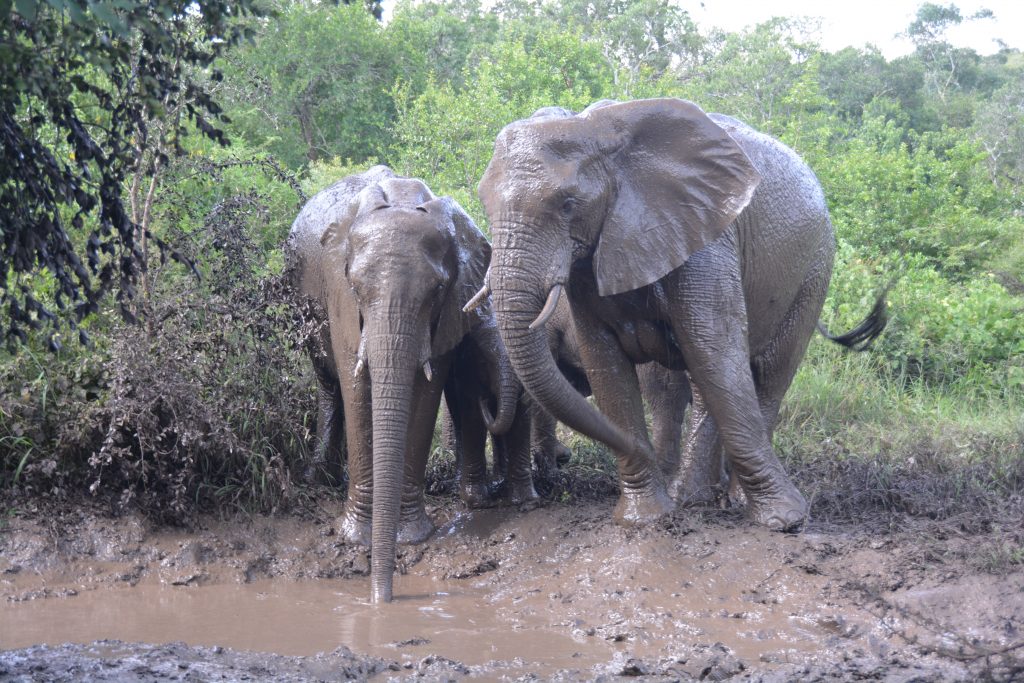
We came across this family having a mud bath to help cool down in the blazing sun – and nearly splattered us with mud in the process
Still abuzz by this special moment, we turned a bend and saw three more elephants up ahead on our track. We inched forward to get a closer look and to park under a shady tree only to be surprised (understatement of the year!) when we realised a massive bull elephant was standing right next to us eating our shady tree. We watched, photoed and videoed this extraordinary beast until he decided he wanted to walk down the track in our direction.
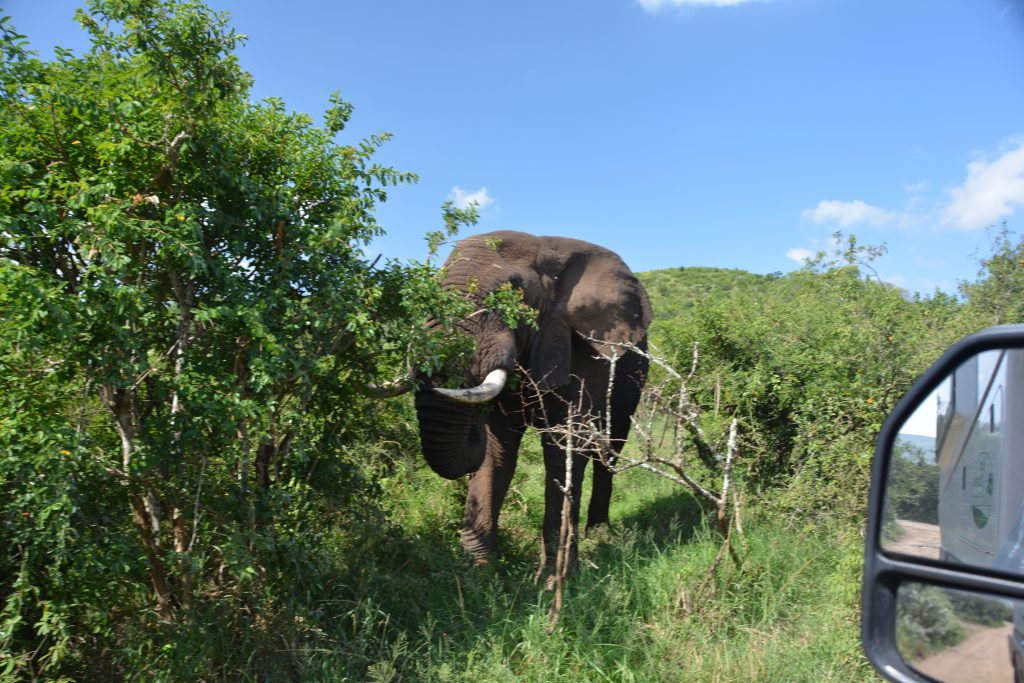
This big boy was hiding behind the tree we were parked under for shade and then decided to walk down the road, ignoring the fact that Tramp was already there
I immediately put Tramp into reverse, not that he needed the suggestion, and in my haste I backed him right into a nearby tree. I was now stuck between an unmovable tree and an approaching elephant towering over us with menacing long tusks. In a moment of calculated self-preservation I gunned Tramp around our new friend, him letting out a loud snort, us a huge sigh of nervous relief. He never showed any aggression or impatience with us, he simply was doing his thing in the jungle and that’s that.
We finished the day camping down near the beach at the town of St. Lucia, waves therapeutically crashing in the background, near the world heritage-listed iSimangaliso Wetland Park, ready for our next adventure. As long as it is from a safer distance!
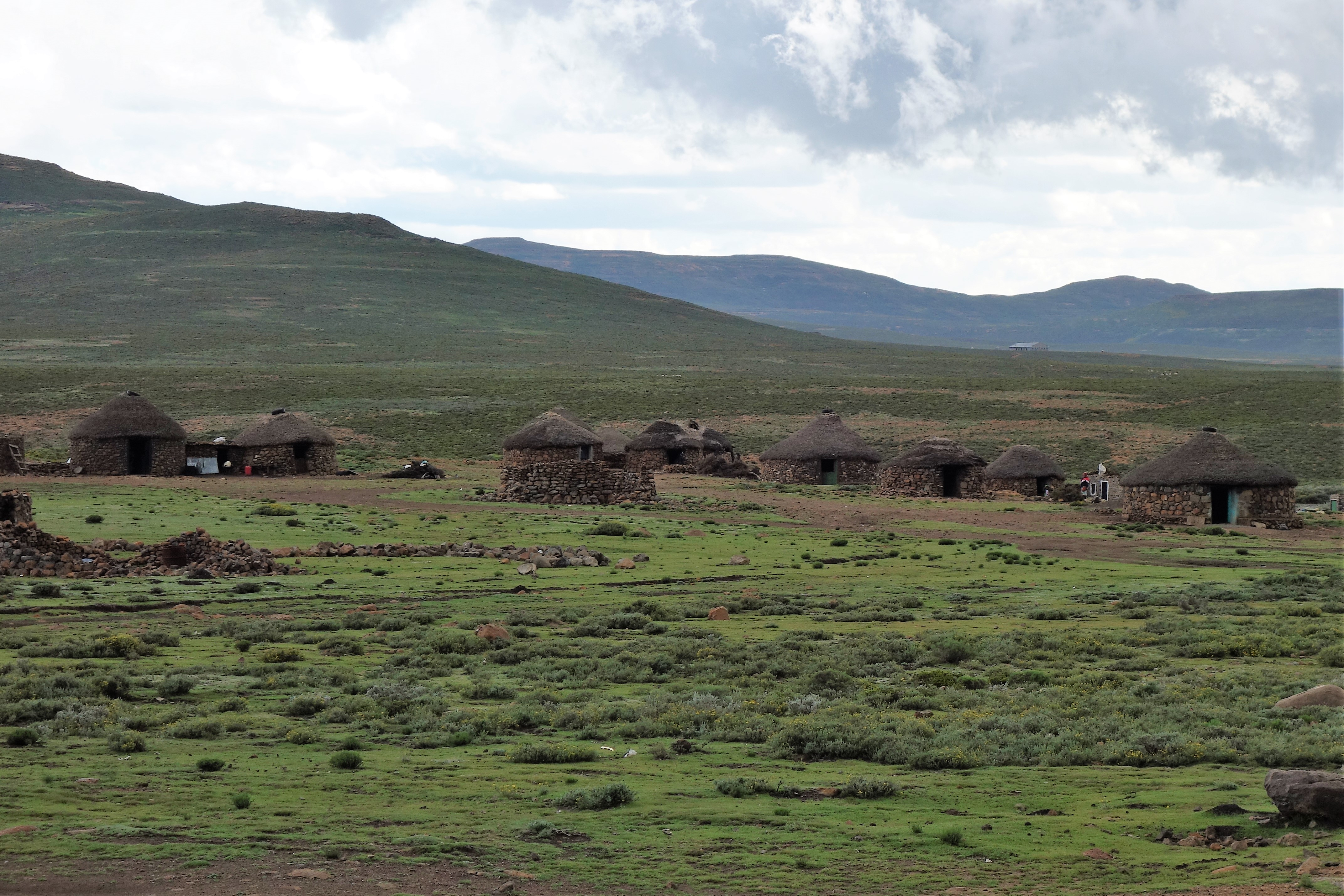



















Looks amazing so lucky to be experiencing such beautiful animals and landscapes
Hi Louise, yes, we’re having a great time and pinch ourselves every day being able to have all these wonderful experiences. Take care to you and John.
Bill
Exciting, but scary in so many ways. Loving it all.
Stay safe and use the long distance camera lens
Lots of love
Xoxo
Hi Anne, the telephoto lens is great but sometimes the animals want to have a closer look at us – then you need the wide angle lens! Bill